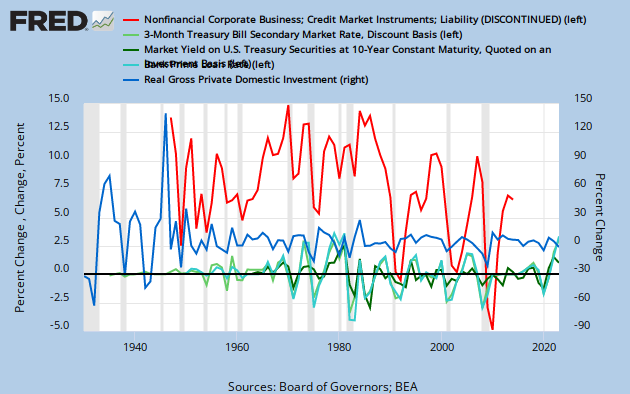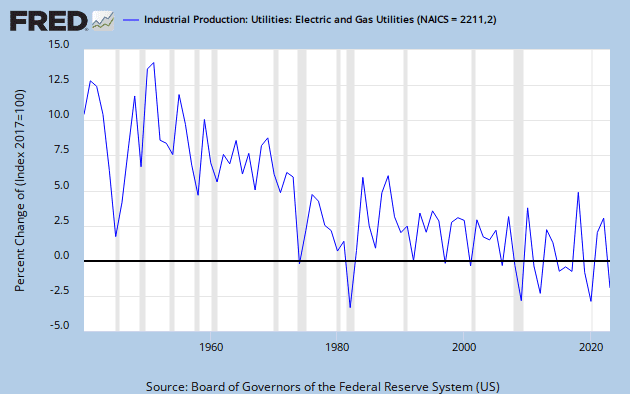Widdekind
Member
- Mar 26, 2012
- 813
- 35
- 16
During downturns (David Romer. Advanced Macroeconomics, p.140),

- businesses stop borrowing (red line, growth rate (%) of corporate debt)
- Investment expenditures plummet (blue line, growth rate (%) of real private investment (I))
- short-term interest rates fall (solid green lines, change (%) of bank prime rate & 3-month T-bill yields)
- long-term interest rates decline (dashed green line, change (%) of 10-year T-bill yields)





